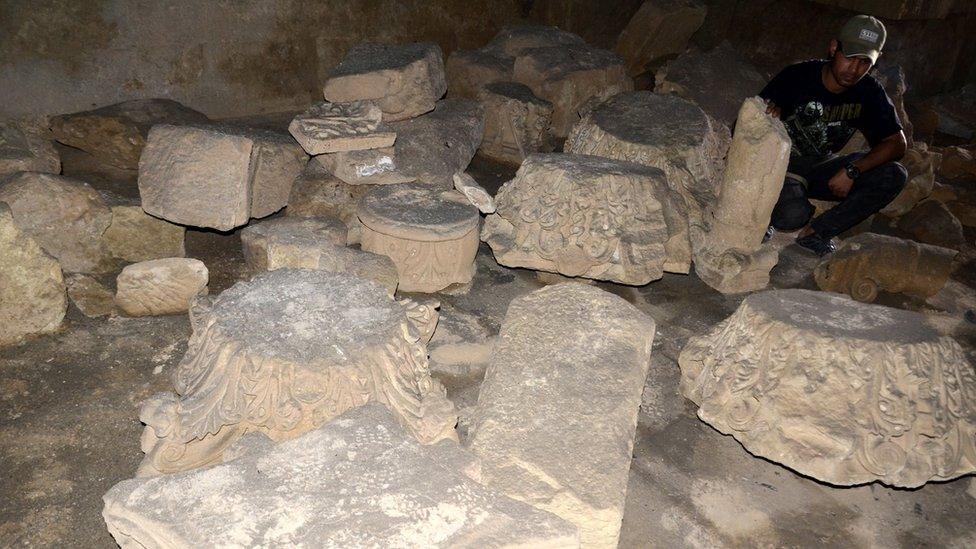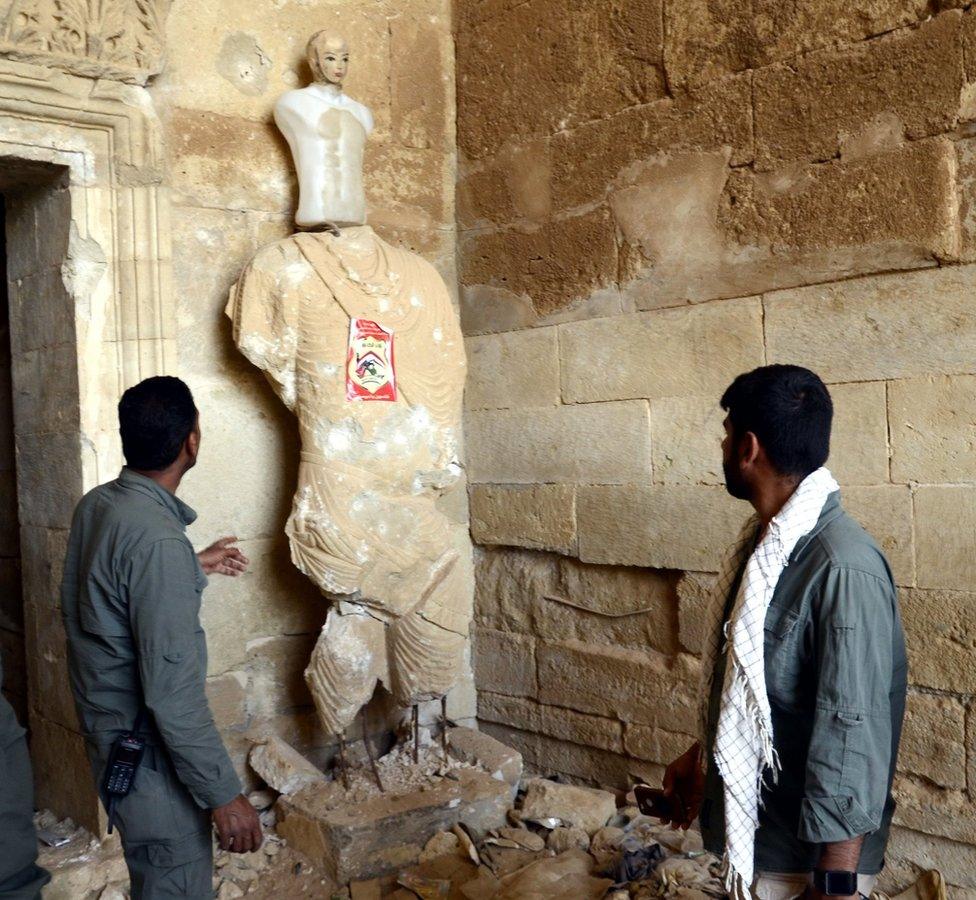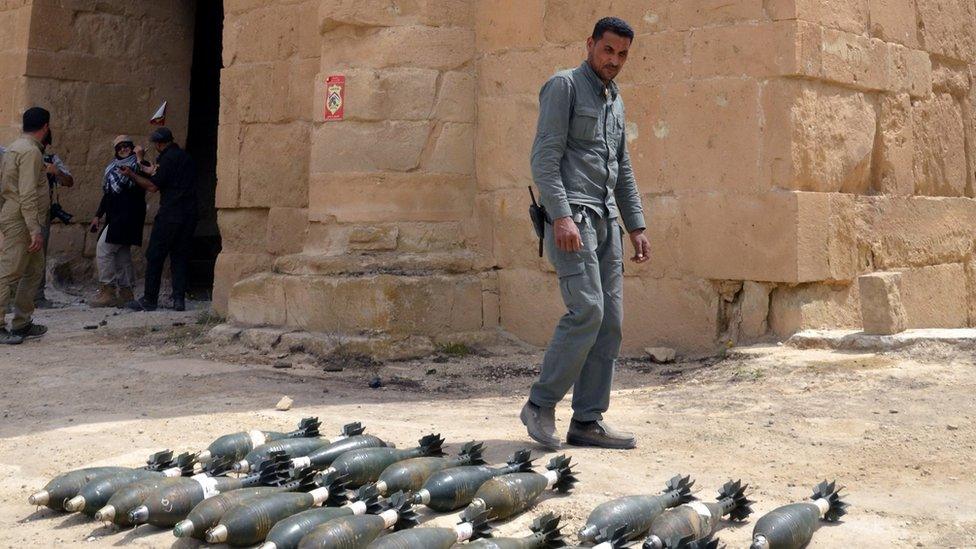Hatra: IS damage to ancient Iraqi city less than feared
- Published

The ancient city of Hatra was recaptured by pro-government fighters last Wednesday
The ancient city of Hatra in Iraq appears to have suffered less damage during the time it was held by so-called Islamic State than first feared.
Militants captured the Unesco World Heritage site in 2014 but were driven out last week by pro-government forces.
The jihadists filmed themselves smashing statues, raising concerns that they might have wreaked destruction on the scale seen in Nimrud and Palmyra.
But the local head of antiquities said most buildings at the site were intact.
Unesco has said the deliberate destruction of Iraq's cultural heritage constitutes a war crime.

IS has bulldozed, blown up and looted pre-Islamic sites it deems idolatrous
Hatra, located 290km (180 miles) north-west of Baghdad and 110km south-west of Mosul, was a religious and trading centre of the Parthian Empire that flourished between the 1st and 3rd centuries AD.
It was one of the best-preserved of Iraq's archaeological sites before it was seized by IS in 2014.
In March 2015, Iraqi officials said they had received reports from locals that IS had destroyed Hatra. The following month, IS itself released a video showing militants using picks, sledgehammers and assault rifles to destroy statues and friezes deemed idolatrous.

Hatra was a religious and trading centre of the Parthian Empire
The full extent of the damage done was not known until Hatra was recaptured by the paramilitary Popular Mobilisation force last Wednesday and pictures emerged.
A journalist from the Spanish Efe news agency visited the site over the weekend and reported finding many destroyed statues, buildings that had been on fire, the charred bodies of several militants, and mortars stored in courtyards. There was also evidence of looting.
But Layla Salih, head of antiquities for the province of Nineveh, was quoted as saying that the destruction "does not compare with what happened at other archaeological sites" in Iraq.

Mortar bombs left by IS militants were found in the courtyards of Hatra
A Popular Mobilisation commander also described the damage as relatively minor.
"The exterior wall was damaged, shots fired by Daesh [IS militants] left holes in some buildings, two grand halls of the ancient palace suffered fires, and shrapnel from shells affected the western part," Kasim Mosleh told Efe.
In November, a month after launching an operation to drive IS out of Mosul, Iraqi forces recaptured Nimrud. However, much of the site was reduced to rubble.